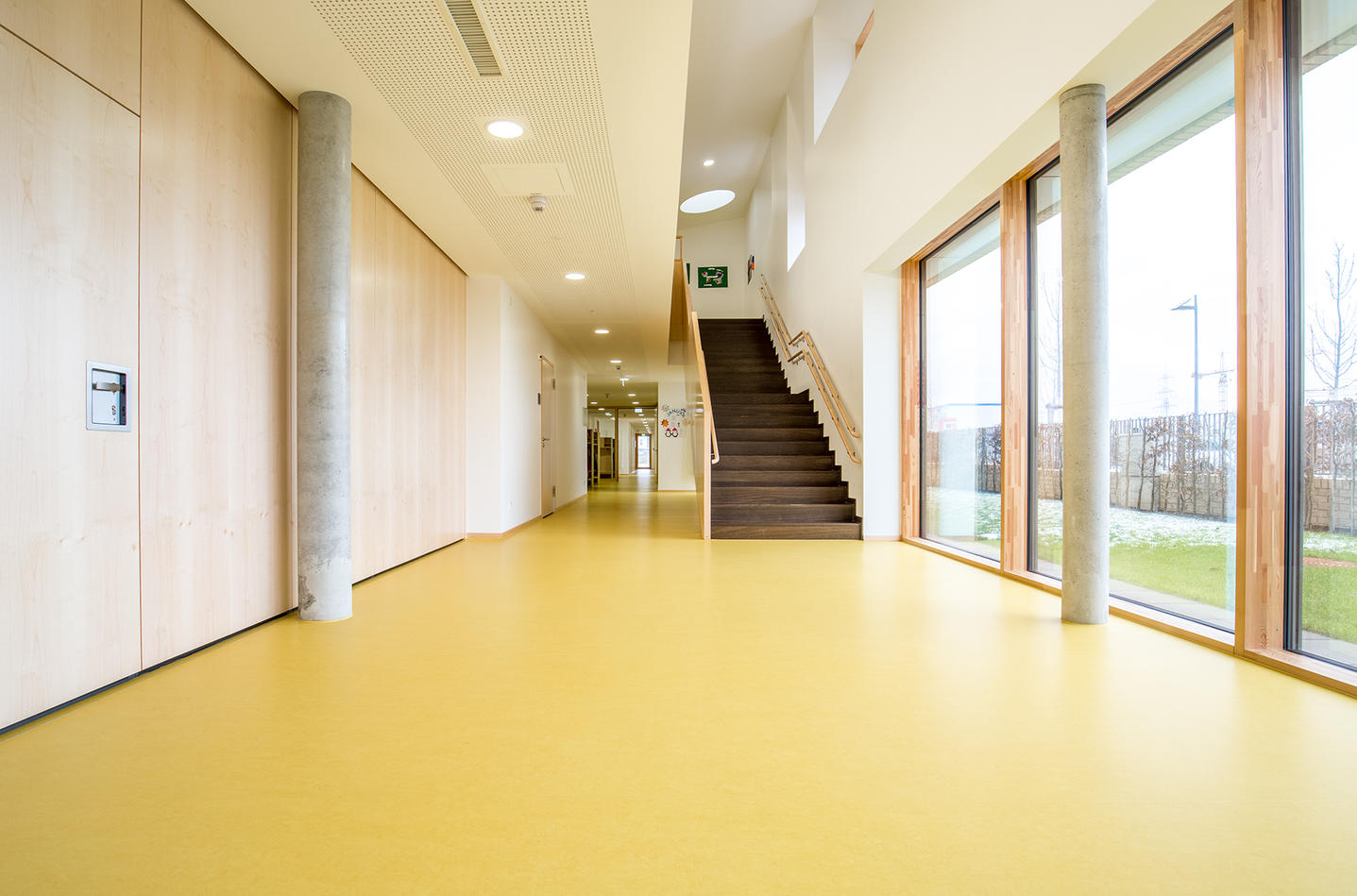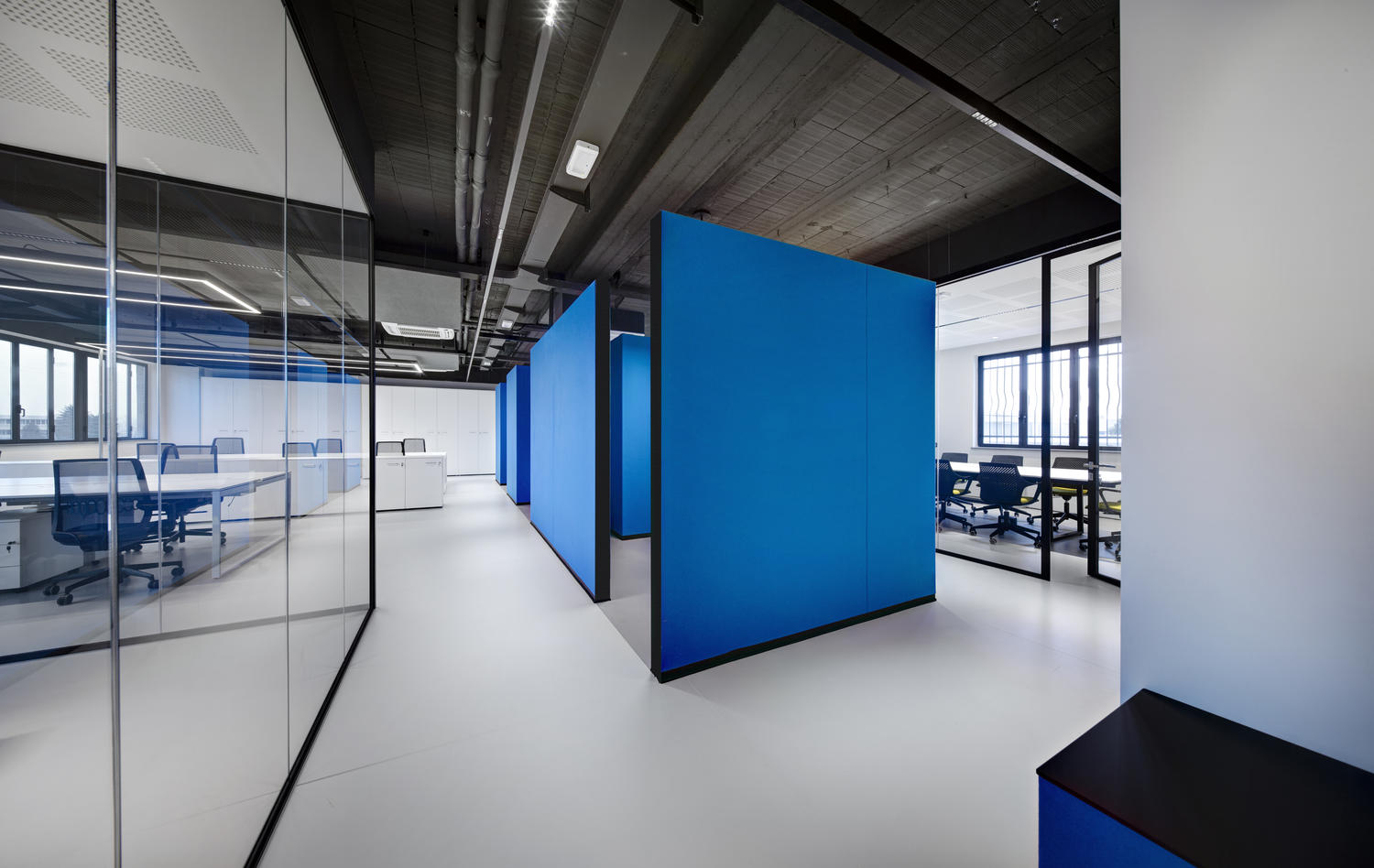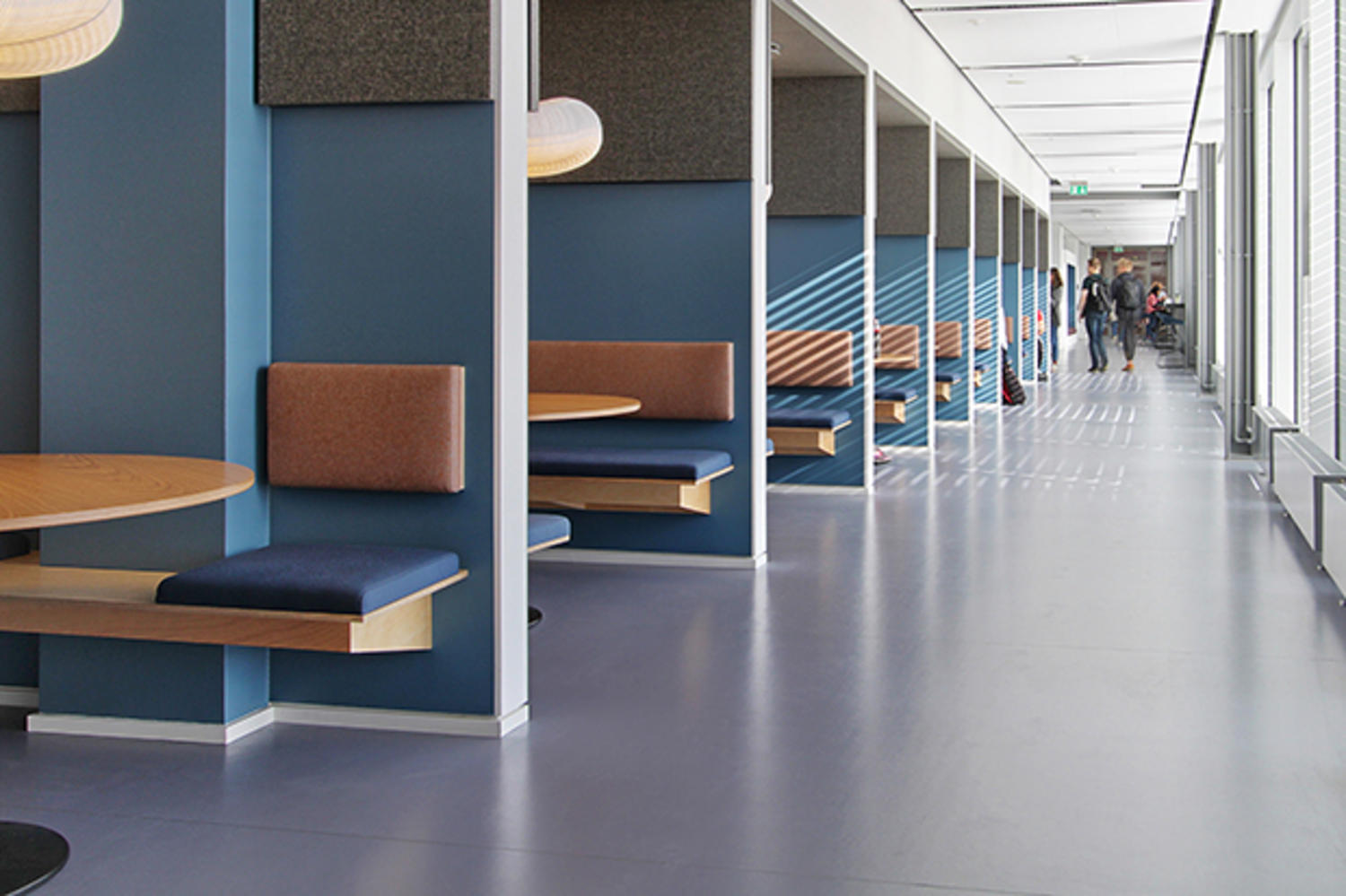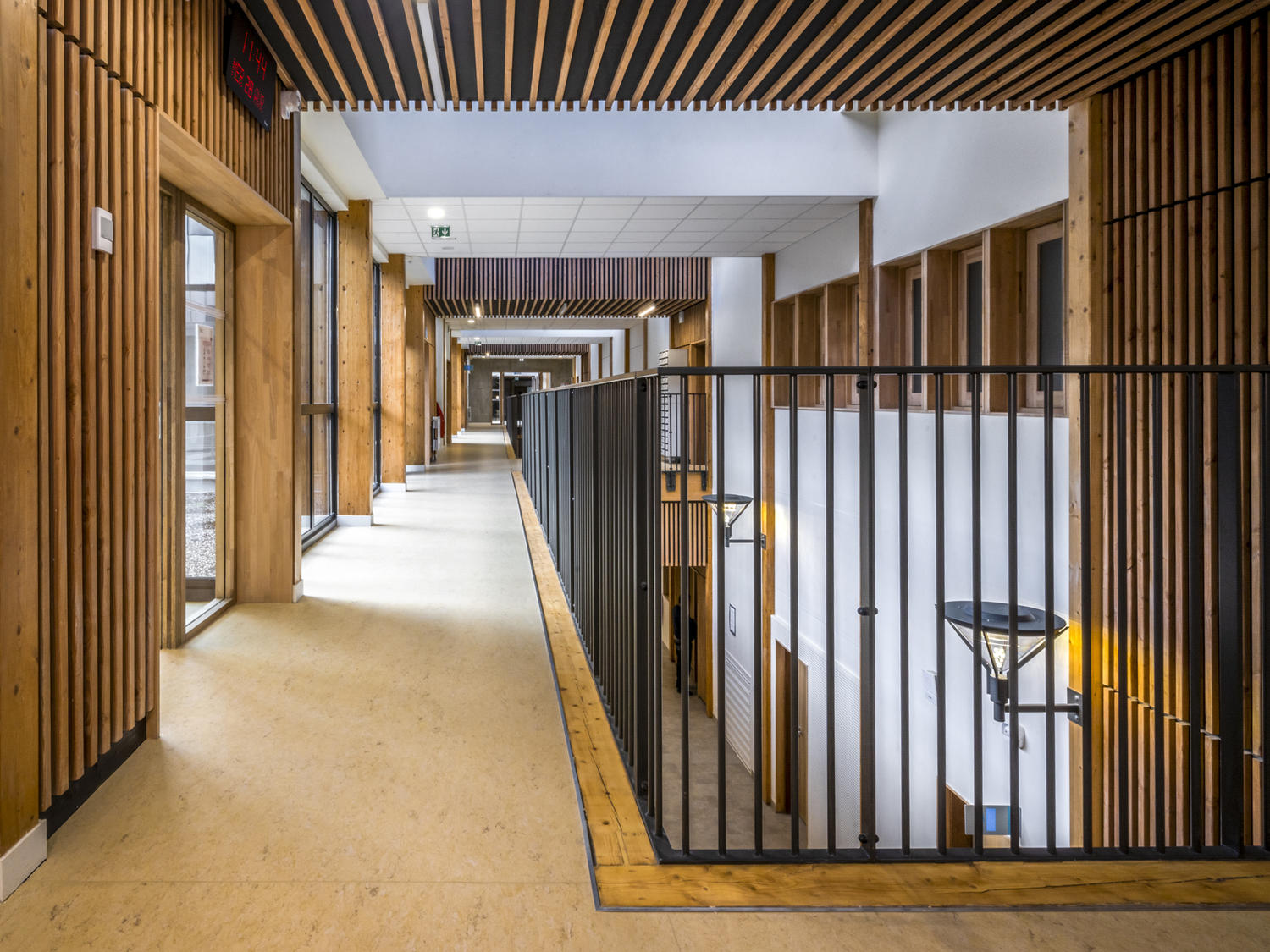- Easy sample ordering
- Access to order history
- Simplified contact with Tarkett

Linoleum
One of the most natural and sustainable flooring solutions on the market, Tarkett linoleum has been appreciated for its natural beauty, comfort and durability for over 150 years. Following the original 1898 recipe, our linoleum is made from 94% natural raw materials (linseed oil, wood and cork flour, resins) and is available across a range of traditional marbled patterns in vivid and deep colours. It is treated with our unique xf²™surface protection for extreme durability, easy cleaning and cost-effective maintenance. Tarkett linoleum is the world’s first to be certified Cradle to Cradle® for its sustainable approach.
Modern design
Our linoleum collection reflects the natural elements that inspire it, with modern designs and a broad palette of subtle shades and patterns, ideal for coordinating floors, walls and even furniture.
Eco-designed floor
Made from natural materials, Tarkett lino provides one of the most sustainable credentials among durable flooring for commercial applications. Discover more on its exceptionally low carbon footprint.
Durable performance
Combining a legacy of expertise with a passion for performance, our linoleum flooring is durable, functional and easy to maintain. It offers many different functionalities such as acoustic, slip-resistance, antistatic...
Popular collections
What is linoleum?
Linoleum is one of the most sustainable flooring solutions on the market, appreciated for its natural beauty, comfort and durability for over 150 years. For the production of the first linoleum, linseed oil was the raw material, hence the name “linoleum”: linum for glue and oleum for oil. Cork flour and jute fabric are the other two raw materials that are important in its production.
A material made of natural and renewable ingredients:
- Linseed oil
- Pine rosin
- Wood
- Cork flour
- Jute
In the Italian community of Narni, Tarkett linoleum has been made using its original formula since 1898, and is today in greater demand than ever. Although manufacturers had to face fierce competition with PVC products in the mid-20th century, linoleum is known for its robustness, design and sustainability.
Explore Lino Collections
Modern Design
Tarkett lino is not just a floor covering, it is a material. A covering that is natural and noble. It is unique, with its own distinctive hues and matt aspect. Our collection reflects the natural elements that inspire it, with a broad palette of subtle shades and patterns, ideal for coordinating floors, walls and even furniture. Using texture and colour, Tarkett lino is the perfect medium for architects and interior designers that allows them to give any space its own identity.
Modern choice for people and the environment
Tarkett lino is a bio-based resilient floor, made from natural and renewable ingredients like linseed oil, pine rosin, wood, cork flour and jute. Tarkett pays attention to the environmental impact of its production, following the Cradle to Cradle Certified® approach that ensures its products have a positive contribution to the environment and people’s well-being at each step of the product’s life, while supporting the transition to a circular economy with our ReStart® take-back and recycling programme.
And as a result, Tarkett lino 2.5 mm is carbon-negative from ‘cradle to gate’, including raw material extraction, transport and linoleum production*.
*as demonstrated in our EPD N°4789356590.101.1
Modern Performance
Linoleum flooring has a whole host of positive qualities and is inherently a resilient flooring that has proved to be very resistant.
The fact that linoleum has been used as a floor covering for more than 150 years is due to its very special properties.
In addition, our lino floor covering proves to be extremely resistant due to our xf² surface treatment that gives high resistance to abrasion and chemicals. Not without reason do schools, hospitals, public institutions and companies use linoleum flooring adapted to their needs.
Another advantage of linoleum is that it is naturally phthalate-free and has anti-bactericidal properties due to the linoxyn binder. Thus, it is a hygienic flooring.
Sustainable flooring
In our linoleum production, we use materials that contribute positively to people’s health and the environment. The closed loop system starts here, so that materials are a reusable resource:
CO² negative
Our 2.5 mm Tarkett lino is carbon-negative from ‘cradle to gate’, including raw material extraction, transport and linoleum production. (refer to EPD N°4789356590.101.1)
Recyclable after use
We recycle linoleum after use by transforming it into raw material destined for new flooring. Our dedicated ReStart® take-back and recycling programme offers post-installation and now post-use recycling.
Cradle to Cradle Certified®
100% of ingredients have been positively assessed according to the Cradle to Cradle Certified® scheme for health and the environment.
Where to lay linoleum?
In addition to its environmental aspects, this floor covering proves to be extremely resistant due to its elasticity and abrasion resistance, with hardly any trace of wear. Not without reason do schools, hospitals, public institutions and companies use linoleum flooring adapted to their needs.
Linoleum can be installed in a large variety of applications, mainly where resistance to high traffic and hygiene is required, such as educational or healthcare facilities.
Installation and maintenance
How to lay linoleum?
What is important is a clean, dry and level surface. Before work begins, the flooring must adapt to the indoor climate. The material should be stored in the premises for at least 24 hours before installation.
To get the desired grip, the right adhesive is required. Linoleum is glued over the entire surface, creating a continuous level without joints and edges. Accurate measuring helps to cut the tracks to be laid in advance. Tarkett offers comprehensive tips and brochures on professional installation for every design.
The installation guides and video offer precise indications for installing different floor thicknesses, designs and equipment.
How to clean linoleum floors?
Linoleum floors are among the most easy-care surfaces: they can be cleaned both easily and cost-effectively. A decisive advantage is their full-surface bonding, with which a continuous flat surface can be created.
After the floors are cleaned of coarse dirt, normal cleansing agents that are added to warm water are sufficient. However, aggressive substances with a high pH value should be avoided. The use of a polishing machine is recommended in commercial applications. This improves the flooring’s appearance and facilitates maintenance significantly.
In the long term, it is advisable to use special linoleum cleaner that is best suited to the material. Modern cleaning techniques aim to reduce wet procedures, replacing them with drier alternatives such as centrally laundered pre-impregnated mops and floor-cleaning machines. This makes work more effective and easier for the cleaning staff, and minimises environmental impact. Less cleaning chemicals and less fresh water are used. This is possible if our xf² surface finish is applied and maintenance protocols are observed: no polish and wax are needed..



